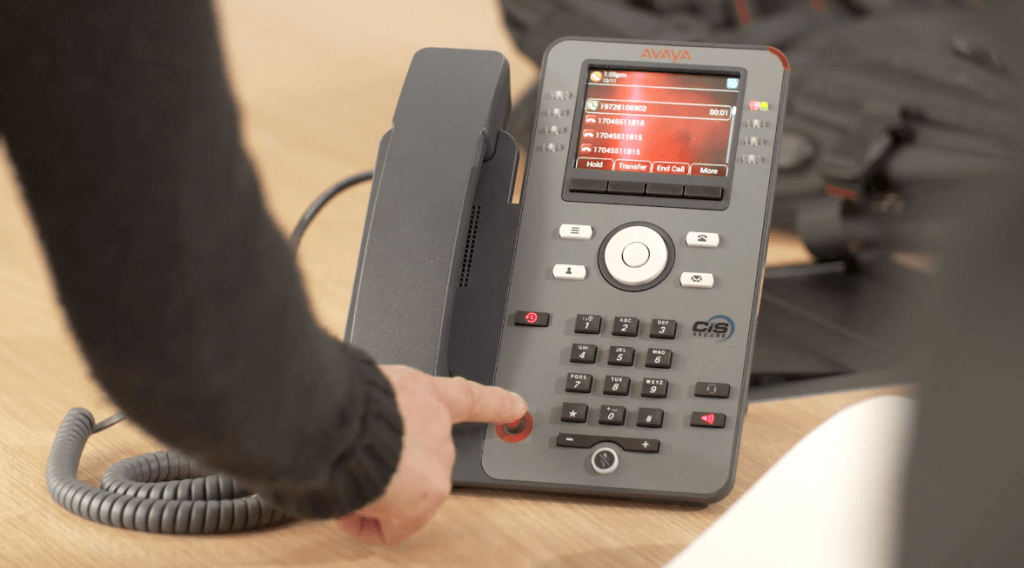Installing a new VoIP phone system for your Business? Here are 6 steps to follow to ensure you get the best system possible.
- Assess Your Needs and Goals
- Research Service Providers
- Choose the Right VoIP Features
- Consider Hardware and Software Requirements
- Test and Pilot the System
- Implement Your VoIP System and Train Your Staff
If you are looking for a VoIP phone system provider you can trust, contact us.
Steps for Getting a VoIP Phone System for Your Business
1. Assess Your Needs and Goals

Before you install a new VoIP system, take time to assess what you need.
If you want to install a VoIP phone system for your business, here are several needs and goals you should take into consideration before you make your decision:
a) Growth:
Make sure that the VoIP phone system can accommodate your business’s growth. You should not only think about the number of users or extensions you need right now but also how many you might need in the future.
b) Cost Efficiency:
Evaluate the total cost of ownership, including the following:
- Initial setup costs
- Hardware
- Ongoing service fees
- Potential savings compared to traditional phone systems
This will help you have a better idea about what your new VoIP phone system will really cost you.
c) Features and Functionality:
Identify the specific features essential for your business operations and make sure you get those features. For a list of possible features, you can go to our section called “Choose the Right VoIP Features“.
d) Security and Compliance:
Assess the security measures offered by the VoIP provider to safeguard sensitive information. Consider compliance with industry standards and regulations like HIPAA or GDPR if applicable to your business.
e) Integration with Existing Systems:

Make sure that your new VoIP phone system will integrate with your existing systems.
Ensure that the VoIP system integrates seamlessly with your current infrastructure, including the following:
- CRM software
- Email systems
- Other communication tools your business relies on
You don’t want to install a system and then find it isn’t compatible with the other systems you rely on.
f) User-Friendliness:
Consider the ease of use for employees. A user-friendly interface and straightforward setup can reduce training time and increase overall productivity.
g) Mobility and Remote Work:
If your business requires flexibility or remote work capabilities, consider a VoIP system that supports mobile applications and allows employees to connect from anywhere.
h) Backup and Redundancy:
Check that the VoIP system has backup and redundancy options in case of internet outages or system failures to maintain continuity in communications.
2. Research Service Providers:

Check out various service providers before making your decision.
Researching and finding a reliable VoIP service provider involves several steps to ensure you choose the right one for your business needs:
a) Compare Providers:
Create a shortlist of potential providers and compare their offerings. Look for key factors such as
- Call quality
- Uptime guarantees
- Customer support availability
- Contract terms
- Additional services (like integration options, mobile apps, security measures)
Look for reputable companies with a track record of reliability and good customer service.
b) Do Online Research:
Use search engines to find top VoIP service providers. Explore their websites to gather information about the following:
- Services
- Features
- Pricing plans
- Customer reviews
You should also read reviews and testimonials on independent review platforms, social media, or industry-specific websites. Pay attention to both positive and negative feedback to get a balanced perspective.
c) Look for Reliability and Call Quality:
Seek a provider that guarantees high call quality and minimal downtime. Reliability is crucial to maintaining smooth communication within your organization.
d) Ask About Support and Maintenance:

Choose a provider that will give you timely support.
Assess the level of customer support provided by the VoIP service provider. Check if they offer the following:
- Timely assistance
- Updates
- Maintenance to keep the system running smoothly
Making sure you will get the support you need is vital for keeping your system functioning properly. Network Telecom offers 24/7/365 technical support so that they are there for you as soon as you need them.
e) Seek References:
Request references from the providers to speak directly with their existing clients. This allows you to gain insights into their experiences and satisfaction with the VoIP service.
f) Ask Questions:
Don’t hesitate to ask potential providers questions about the following:
- Their services
- Technology used
- Security measures
- Scalability options
- Any concerns you might have
A reliable service provider will be more than will to answer all your questions and address any concerns you might have
3. Choose the Right VoIP Features:

Make sure you get the features you need.
Determine which features are crucial for your business operations and make sure that you get them. Prioritize the features that align best with your business needs and will enhance your productivity. Here is a list of some of the most common VoIP phone system features you may want to have:
- Call Forwarding: Redirect incoming calls to another number or device, ensuring you never miss important calls.
- Auto-Attendant: A virtual receptionist that routes calls based on pre-set options, providing callers with menu choices (e.g., press 1 for sales, 2 for support).
- Voicemail-to-Email: Transcribes voicemail messages into text and sends them to your email, allowing for easy access and review.
- Call Recording: Record and store calls for quality assurance, training purposes, or compliance.
- Conference Calling: Conduct multi-party calls, enabling collaboration among team members or with clients from different locations.
- Caller ID: Display caller information (name, number, or extension) to help identify incoming calls.
- Call Waiting: Notify users of incoming calls while they are already on a call, allowing them to manage multiple calls.
- Do Not Disturb (DND): Temporarily block incoming calls or send them directly to voicemail when users are busy or need uninterrupted focus.
- Call Monitoring: Supervisors or managers can listen in on calls in real-time for training or quality control purposes.
- Mobile Integration: Use mobile apps that allow users to make and receive calls using their business number on their smartphones, ensuring connectivity on the go.
- CRM Integration: Integrate with Customer Relationship Management (CRM) software to access customer data during calls, improving customer service and efficiency.
- Call Analytics/Reporting: Access data and analytics about call volumes, durations, and other metrics for better decision-making and performance tracking.
- Intercom/Paging: Broadcast announcements or messages to specific extensions or all devices within the system.
- Unified Communications: Integrate various communication channels (voice, video, messaging) into a single platform for seamless interaction.
These features can vary depending on the VoIP service provider and the specific plan or package chosen. They cater to different business needs and customer service capabilities within an organization.
4. Consider Hardware and Software Requirements:

Think about the hardware devices you will need for your VoIP phone system.
Evaluate the hardware needed for your VoIP system and make sure that they are available from the service provider you choose. Here’s a breakdown of the basic hardware and software components of a VoIP phone system:
a) Hardware Devices
The following is a list and brief description of the various types of hardware devices you will need for your VoIP phone system:
IP Phones (Hardware Endpoints): These are the physical devices used to make and receive VoIP calls. They resemble traditional telephones but use the internet to transmit voice data.
VoIP Adapters/ATA (Analog Telephone Adapters): They convert analog signals from traditional telephones into digital signals suitable for VoIP, allowing their integration into a VoIP system.
Routers/Switches: This is a type of networking equipment that directs data packets between devices within the network, managing the flow of voice and data traffic for VoIP calls.
PBX (Private Branch Exchange): Often a software-based system, PBX manages internal calls, connects users within an organization, and handles incoming/outgoing calls.
Headsets: Headsets are used for hands-free communication, these devices come with microphones and speakers or earpieces and connect directly to the IP phones or computers.
b) Software Components

You need software to run your VoIP phone system.
In addition to hardware devices, you will also need a range of software components for your phone system. Here are some of the main types:
VoIP Server: This is the backbone of the VoIP system, handling call routing, signaling, and managing connections between users. It’s responsible for ensuring calls are connected and data is transmitted effectively.
VoIP Client Software: These are applications installed on computers, smartphones, or other devices that enable users to make VoIP calls. Examples include softphones or specific applications provided by the VoIP service provider.
VoIP Protocol : Protocols are rules that govern how voice data is transmitted over the internet. They establish connections, manage call sessions, and facilitate the transfer of voice packets.
VoIP Gateway: A VoIP Gateway translates voice traffic between the IP network and the Public Switched Telephone Network (PSTN), allowing VoIP calls to connect with traditional phone lines.
VoIP Management Software: These are tools used to monitor and manage the VoIP network, including call analytics, user management, and system configuration.
Firewall/Security Software: This type of software ensures network security by protecting against potential threats, unauthorized access, and ensuring data encryption for secure VoIP communication.
5. Test and Pilot the System:

You should test out your system on a small group.
Testing a new VoIP phone system is crucial to ensure it meets your business needs and operates reliably. Here are the steps to take to perform a test:
a) Set Up a Test Environment:
Designate a specific area or group within your organization to conduct the testing. Install and configure the VoIP system with the required hardware and software components.
b) Test Call Quality:
Make test calls internally and externally to assess call clarity, latency, and any potential issues with voice quality. Test during peak and off-peak hours to gauge performance under different network conditions.
c) Evaluate Features and Functionality:
Test each feature offered by the VoIP system. Make sure that each feature works as expected and integrates smoothly with existing systems (if applicable).
d) Assess Reliability and Redundancy:
Simulate network disruptions or outages to evaluate the system’s failover mechanisms. Check how it handles such scenarios and if it maintains continuity of service.
e) User Acceptance Testing (UAT):
Involve end-users in the testing phase. Gather feedback on the following:
- Usability
- Interface intuitiveness
- Any issues encountered during their interactions with the system
Based on the test results and feedback, make necessary adjustments, configurations, or optimizations to improve the system’s performance and functionality.
6. Implement Your VoIP System and Train Your Staff

You will now need to train your staff on your new VoIP system.
Once you’ve chosen a provider, coordinate the implementation process. This involves:
- Setting up hardware
- Configuring software
- Migrating existing phone systems, if any
You should also provide comprehensive training to employees on how to use the new VoIP system effectively. A reputable service provider should provide this training for you.
Here are some different types of training that can be done to ensure a smooth transition:
a) Hands-on Training:
Provide hands-on training sessions where users can interact with the new VoIP system. Demonstrate how to use basic features like making/receiving calls and setting up voicemail. You can also offer separate sessions or workshops focusing on advanced features like call forwarding and mobile integration.
b) Role-play Scenarios:
Create simulated scenarios or role-playing exercises to help users practice real-world situations, such as handling client calls and transferring calls to different departments. These session can help your staff learn how to use specific features during various scenarios.
c) Documentation and Resources:
Distribute comprehensive training materials including user guides, FAQs, or cheat sheets summarizing essential functions for quick reference.
By implementing a structured and tailored training program, you can ensure that your staff feels confident and capable of using the new VoIP phone system efficiently in their daily workflow.
Installing a VoIP Phone System? Contact Network Telecom.
If you are wanting to install a VoIP phone system, we can help. We have extensive experience in telecommunications and will make sure that your transition to a new system is as smooth as possible.
Whatever your business telecommunications needs are, Network Telecom is here for you. We have been selling, installing, and servicing every type of phone system for over 40 years. We can even help with training your employees on the features of your new phone system so that you can use it as efficiently as possible.
If your phone system is not working as it should, our trained technicians are available to help 24 hours a day, 7 days a week, 365 days a year. We carry a huge selection of parts in order to quickly solve any component issues you are experiencing.


In addition to our accredited and certified technical expertise, we offer:
- Consultative Sales
- Cloud Services
- Ongoing Support
- Voice Mail Systems
- System Design + Consulting
- System Admin + User Training
- PA Systems
- VoIP Specialist
- Network Cabling
“Network Telecom was wonderful to work with. Helpful and knowledgeable, their team transitioned our office to the new phone system with ease. They were also available to answer concerns and provide additional support post transition. Would definitely recommend their services. Thank you to the team at Network Telecom!”
“We just had an installation done today and it was a great experience. I am not at all tech savvy but everything was explained in a helpful and patient manner. The system seems great and we are really looking forward to running a more efficient office. Highly recommended!”
“Outstanding Service! We had a full phone system installed at a brand new facility and the experience was great. From sales to service the team followed through. The support we have received so far has been excellent. During our install the Network Telecom team even stepped in to help another company who couldn’t complete their portion of the install on time. They truly understand the big picture and will do what it takes to ensure the install is completed to keep your business up and running. 10/10”

